Spring整合笔记
Posted BubblesMusic
tags:
篇首语:本文由小常识网(cha138.com)小编为大家整理,主要介绍了Spring整合笔记相关的知识,希望对你有一定的参考价值。
Spring简介
Spring是春天的意思---> 给软件行业带来了春天
2002,首次推出了Spring框架的雏形:interface21框架!
2004年3月24日,Spring框架以interface21框架为基础,经过重新设计,发布了1.0正式版本。
Rod Johnson,Spring Framework创始人
spring理念
是现有的技术更加容易使用,本身是一个大杂烩,整合了现有的技术框架!
SSH:Struct2 +Spring + Hibernate
SSM: SpringMvc +Spring +Mybatis
官方下载地址:repo.spring.io
GitHub: GitHub - spring-projects/spring-framework: Spring Framework
导包
<dependency>
<groupId>org.springframework</groupId>
<artifactId>spring-webmvc</artifactId>
<version>5.2.0.RELEASE</version>
</dependency>jdbc
<dependency>
<groupId>org.springframework</groupId>
<artifactId>spring-jdbc</artifactId>
<version>5.2.0.RELEASE</version>
</dependency>优点
Spring是一个开源的免费得框架(容器)!
Spring是一个轻量级得、非入侵式得框架!
控制反转(lOC),面向切面编程(AOP)!
支持事务的处理,对框架整合的支持!
总结一句话
Spring就是一个轻易级的控制反转(loc)和面向切面编程(AOP)的框架!
Spring组成和扩展
1.组成
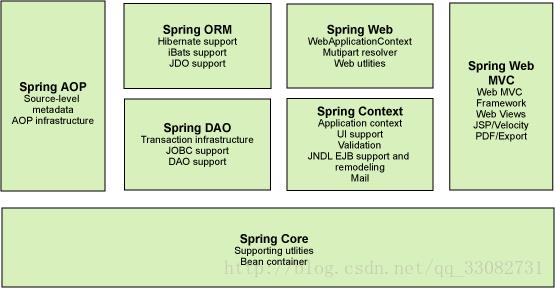
2.扩展
在Spring官网有这个介绍:现代化的java开发!说白就是基于spring开发
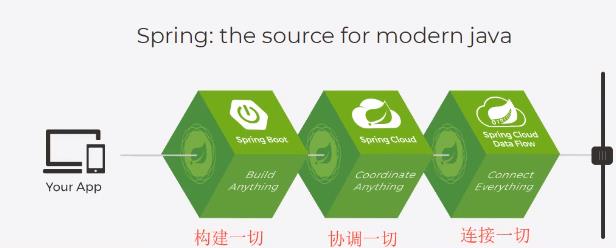
Spring Boot
一个快速开发的脚手架。
基于Spring Boot可以快速的开发单个微服务。
约定大于配置!
Spring Cloud
Spring Cloud是基于SpringBoot实现的。
为什么要使用他们?
因为现在大多公司都在使用Spring Boot进行快速开发,学习Spring Boot的前提,需要完全掌握Spring以及SpringMVC!承上启下的作用!
弊端:发展了太久之后,违背了原来的理念!配置十分繁琐,人称:"配置地狱!"
loc理论推导
UserDao接口
UserDaolmpl实现类
UserService业务接口
UserServicelmpl业务实现类
在我们之前的业务中,用户的需求可能会影响我们原来的代码,我们需要根据 用户的需求去修改原代码!
如果程序代码量十分大,修改一次的成本代价十分昂贵!

使用一个set 接口实现
//利用set进行动态实现值的注入!
public void setUserDao(UserDao userDao) {
this.userDao = userDao;
}
之前,程序员是主动创建对象! 控制权在程序员手上!
使用了set注入后,程序员不再具有主动性,而是变成了被动的接受对象!
这种思想从本质上解决了问题,我们程序员不用再去管理对象的创建了.系统的耦合性大大降低,可以更加专注在业务的实现上!这是loc的原型!
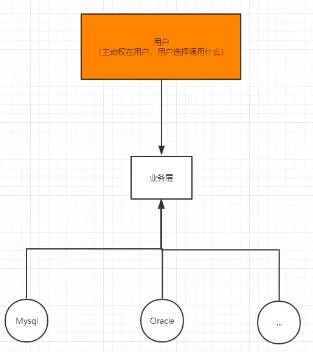
loc本质
控制反转loC(Inversion of Control),是-种设计思想,DI(依赖注入)是实现loC的- -种方法,也有人认为DI只是loC的另-种说法。没有IoC的程序中,我们使用面向对象编程,对象的创建与对象间的依赖关系完全硬编码在程序中,对象的创建由程序自己控制,控制反转后将对象的创建转移给第三方,个人认为所谓控制反转就是:获得依赖对象的方式反转了。
采用XML方式配置Bean的时候,Bean的定义信息是和实现分离的,而采用注解的方式可以把两者合为一体,Bean的定义信息直接以注解的形式定义在实现类中,从而达到了零配置的目的。
控制反转是-种通过描述(XML 或注解)并通过第三方去生产或获取特定对象的方式。在Spring中实现控制反
转的是loC容器,其实现方法是依赖注入(Dependency Injection,DI)。
Spring测试
1.导包
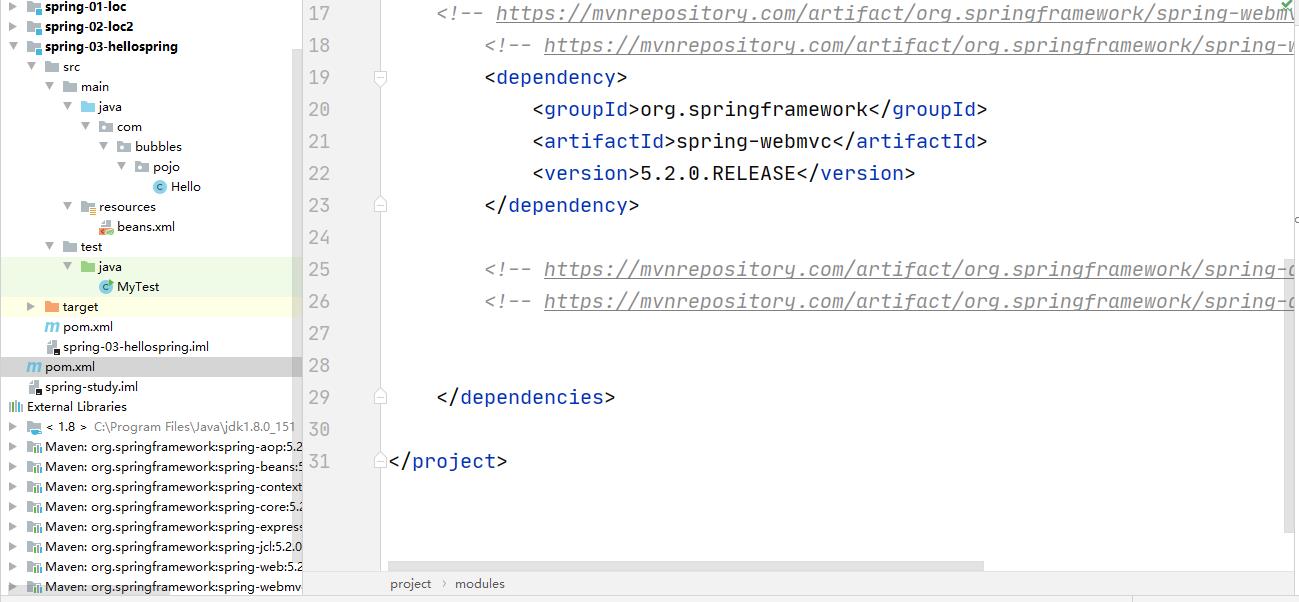
2.新建一个实体类
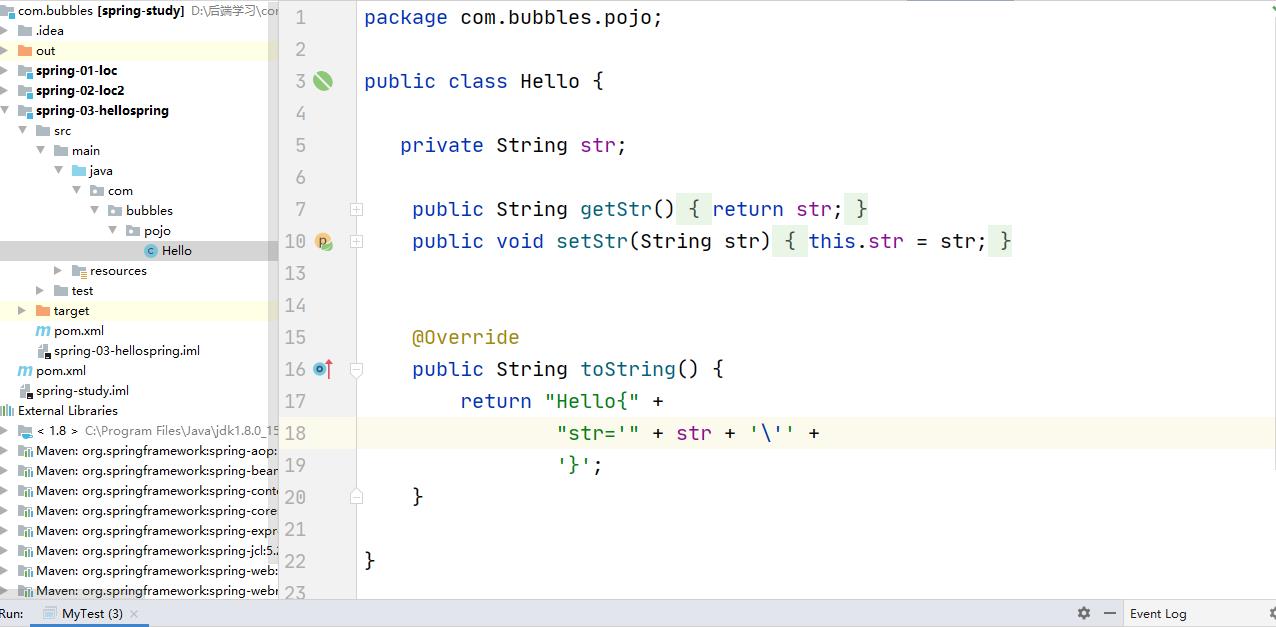
3.新建一个beans.xml配置文件

4.在test文件下进行测试
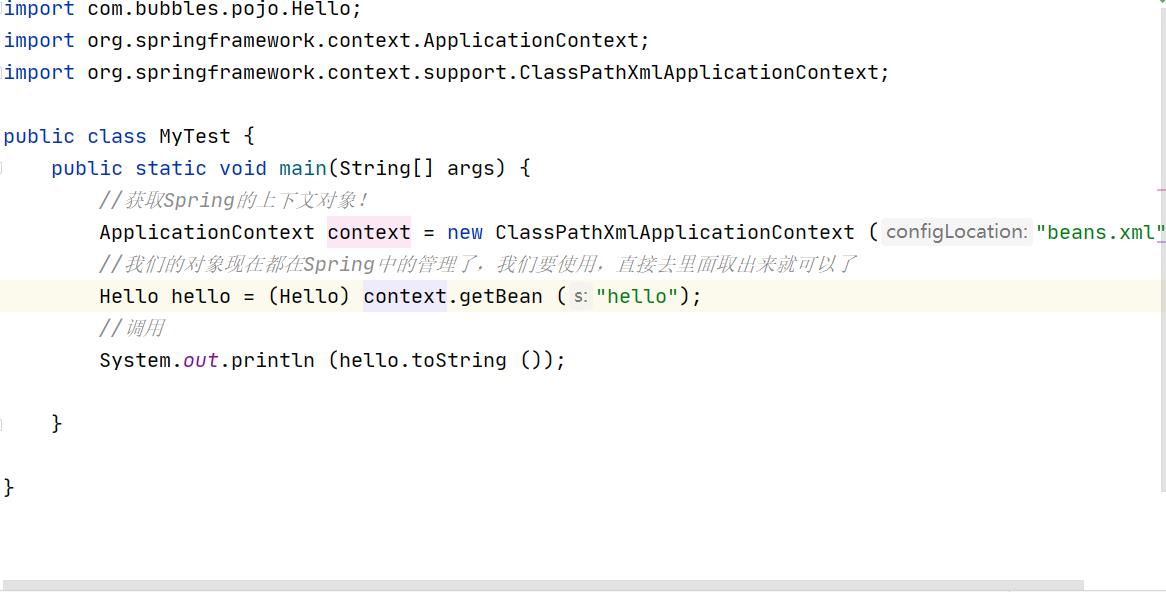
5.输出结果,值就被取过来了

loc对象创建方式
1.使用无参构造,默认!
2.假设我们要使用有参构造创建对象。
1. 下标赋值
<!--第一种下标赋值-->
<bean id="user" class="com.bubbles.pojo.User">
<constructor-arg index="0" value="彬哥 "/>
</bean>2.类型,不建议使用
<!--第二种方式通过类型创建,不建议使用!-->
<bean id="user" class="com.bubbles.pojo.User">
<constructor-arg type="java.lang.String" value="彬哥"/>
</bean>3.参数名,建议使用
<!--第三种,直接通过参数名来设置 -->
<bean id="user" class="com.bubbles.pojo.User">
<constructor-arg name="name" value="彬哥"/>
</bean>总结
在配置文件加载的时候,容器中管理的对象就已经初始化了!
Spring配置说明
别名
<!-- 别名,如果添加了别名,我们也可以使用别名获取到这个对象-->
<alias name="user" alias="springyyds"/>Bean的配置
<!--配置 id:bean 的唯一标识符,也就是相当于我们学的对象名 class :bean 对象所对应的全限定名:包名 +类型 name 也是别名,而且name 可以同时取多个别名 -->
<bean id="user1" class="com.bubbles.pojo.User1" name="user12,u2,u3;u4">
<property name="name" value="ksyyds"/>
</bean>import
这个import,一般用于团队开发使用,他可以将多个配置文件,导入合并为一个
假设,现在项目中有多个人开发,这三个人复制不同的类开发,不同的类需要注册在不同的bean中,我们可以利用import将所有人的beans.xml合并为一个总的!
张三
李四
王五
applicationContext.xml
<import resource="beans.xml"/>
<import resource="beans2.xml"/>
<import resource="beans3.xml"/>使用的时候,直接使用总的配置就可以了。
Dl依赖注入环境
依赖注入
构造器注入
前面有
2.set方式注入【重点】
依赖注入:Set注入!
依赖
bean对象的创建依赖于容器!
注入
bean对象中的所有属性,由容器来注入
环境搭建
1.复杂类型
package com.bubbles.pojo;
public class Address {
//引用对象
private String address;
public String getAddress() {
return address;
}
public void setAddress(String address) {
this.address = address;
}
}2.真实测试对象
package com.bubbles.pojo; import java.util.*;
//学生类
public class Student {
private String name;
private Address address;
private String [] books;
private List<String> hobbys;
private Map<String,String> card;
private Set<String> games;
private String wife;
private Properties info;
后面的Ait+lnsert自己生成 }3.beans.xml
<?xml version="1.0" encoding= "UTF-8"?>
<beans xmlns="http://www.springframework.org/schema/beans" xmlns:xsi="http://www.w3.org/2001/XMLSchema-instance" xsi:schemaLocation="http://www.springframework.org/schema/beans https://www.springframework.org/schema/beans/spring-beans.xsd ">
<bean id="student" class="com.bubbles.pojo.Student">
<!--第一种,普通值注入,value -->
<property name="name" value="彬哥"/>
</bean>
</beans>4.测试
import com.bubbles.pojo.Student;
import org.springframework.context.ApplicationContext;
import org.springframework.context.support.ClassPathXmlApplicationContext;
public class MyTest {
public static void main(String[] args) {
ApplicationContext mapper = new ClassPathXmlApplicationContext ("beans.xml");
Student student = (Student)mapper.getBean ("student");
System.out.println (student.getName ());
}
}完善注入信息
<?xml version="1.0" encoding= "UTF-8"?>
<beans xmlns="http://www.springframework.org/schema/beans"
xmlns:xsi="http://www.w3.org/2001/XMLSchema-instance"
xsi:schemaLocation="http://www.springframework.org/schema/beans
https://www.springframework.org/schema/beans/spring-beans.xsd ">
<bean id="address" class="com.bubbles.pojo.Address">
<property name="address" value="西安" />
</bean>
<bean id="student" class="com.bubbles.pojo.Student">
<!--第一种,普通值注入,value -->
<property name="name" value="彬哥"/>
<!--第二种,Bean注入,ref -->
<property name="address" ref="address"/>
<!-- 数组注入-->
<property name="books" >
<array>
<value>红楼梦</value>
<value>西游记</value>
<value>熊出没</value>
<value>海绵宝宝</value>
</array>
</property>
<!-- List -->
<property name="hobbys">
<list>
<value>编程</value>
<value>学习</value>
<value>打代码</value>
</list>
</property>
<!--Map -->
<property name="card">
<map>
<entry key="身份证" value="6666666666666666"/>
<entry key="银行卡" value="123456789"/>
</map>
</property>
<!--Set-->
<property name="games">
<set>
<value>和平精英</value>
<value>我的世界</value>
<value>植物大战僵尸</value>
</set>
</property>
<!--null -->
<property name="wife">
<null/>
</property>
<!--Properties
key=value
key=value
key=value
-->
<property name="info">
<props>
<prop key="driver">20218031</prop>
<prop key="url">男</prop>
<prop key="username">root</prop>
<prop key="password">Root</prop>
</props>
</property>
</bean>
</beans>常用注入
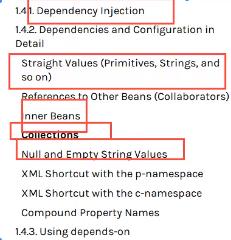
扩展方式注入
官方解释
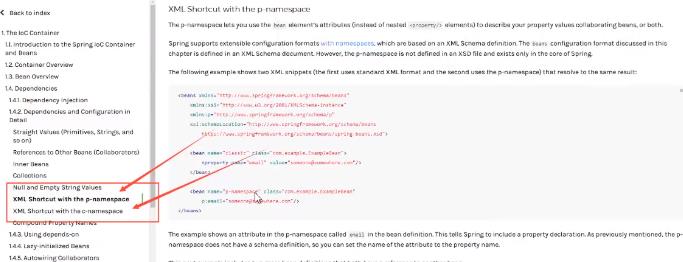
使用
<?xml version="1.0" encoding= "UTF-8"?>
<beans xmlns="http://www.springframework.org/schema/beans" xmlns:xsi="http://www.w3.org/2001/XMLSchema-instance" xmlns:p="http://www.springframework.org/schema/p" xmlns:c="http://www.springframework.org/schema/c" xsi:schemaLocation="http://www.springframework.org/schema/beans https://www.springframework.org/schema/beans/spring-beans.xsd ">
<!--p命名空间注入,可以直接注入属性的值:property -->
<bean id="user" class="com.bubbles.pojo.User" p:name="彬哥" p:age="17"/>
<!--c命名空间注入,通过构造器注入:constructs-args -->
<bean id="user2" class="com.bubbles.pojo.User" c:age="17" c:name="bubbles" />
</beans>测试
@Test public void test(){
ApplicationContext mapper = new ClassPathXmlApplicationContext ("userbeans.xml");
User user = mapper.getBean ("user",User.class);
System.out.println (user);
}注意点
p命名和c命名空间不能直接使用,需要导入xml约束!
xmlns:c="http://www.springframework.org/schema/c"xmlns:p="http://www.springframework.org/schema/p"bean的作用域

1.单理模式(Spring默认机制)
<bean id="user2" class="com.bubbles.pojo.User" c:age="17" c:name="bubbles" scope="singleton" />2.原型模式:每次容器中get的时候,都会产生一个新对象!
<bean id="user2" class="com.bubbles.pojo.User" scope="singleton" />3.其余的request、session、application、这些个只能在web开发中使用到!
Bean的自动装配
自动装配是Spring满足bean依赖一种方式!
Spring会在上下文中自动寻找,并自动给bean装配属性!'
在Spring中有三中装配的方式
1.在xml中显示的配置
2.在java中显示配置
3.隐式的自动装配bean【重要】
测试
环境搭建
一个人有两只宠物!
ByName自动装配
<!-- autowire是自动装配的意思-->
<!--byName:会自动在容器上下文中查找,和自己对象set方法后面的值对应的beanid! --> <bean id="people" class="com.bubbles.pojo.People" autowire="byName">
<property name="name" value="彬哥" />
</bean>ByType自动装配
<bean class="com.bubbles.pojo.Cat" />
<bean class="com.bubbles.pojo.Dog" />
<!-- autowire是自动装配的意思-->
<!--byName:会自动在容器上下文中查找,和自己对象set方法后面的值对应的beanid! -->
<!--byType:会自动在容器上下文中查找,和自己对象属性类型相同的bean! -->
<bean id="people" class="com.bubbles.pojo.People" autowire="byType">
<property name="name" value="彬哥" />
</bean>总结
byname的时候,需要保证所有bean的id唯一,并且这个bean需要和自动注入的属性的set方法的值一致!
bytype的时候,需要保证所有bean的class唯一,并且这个bean需要和自动注入的属性的类型一致!
使用注解实现自动装配
jdk1.5支持的注解,Spring2.5就支持注解。
要使用注解须知
1.导入约束: context约束
2.配置注解的支持 :<context:annotation-config /> 【重要!】
<?xml version="1.0" encoding="UTF-8"?>
<beans xmlns="http://www.springframework.org/schema/beans"
xmlns:xsi="http://www.w3.org/2001/XMLSchema-instance"
xmlns:context="http://www.springframework.org/schema/context"
xsi:schemalocation="http://www.springframework.org/schema/beans
https://www.springf ramework.org/schema/beans/spring-beans.xsd
http://www.springframework.org/schema/context
https://www.springframework.org/schema/context/spring-context.xsd">
<context:annotation-config/>
</beans>@Autowired
直接在属性上使用即可!
也可以在set方式上使用!

使用@Autowired我们可以不用编写Set方法了,前提是你这个自动装配的属性在loc(Spring)容器中存在,且符合名字byname!
科普
@Nullable 字段标记了这个注解,说明这个字段可以为null:
public @interface Autowired{
boolean required() default true;
}测试代码
public class People {
//如果显示定义了Autowired的required属性false,说明这个对象可以为null,否则不允许为空
public class People {
@Autowired(required = false)
private Cat cat;
@Autowired
private Dog dog;
private String name;
}如果 @Autowired自动装配的环境比较复杂,自动装配无法通过一个注解
【@Autowired】完成的时候、我们可以使用@Qualifier(value ="xxx")去配置
@Autowired的使用,指定一个唯一的bean对象注入!
public class People {
@Autowired
@Qualifier(value ="cat11")
private Cat cat;
@Autowired
@Qualifier(value ="dog111")
private Dog dog;
private String name;
}@Resource注解
public class People {
@Resource(name = "cat2")
private Cat cat;
@Resource
private Dog dog;
private String name;
}总结
@Resource 和@Autowired的区别
都是用来自动装配的,都可以放在属性字段上
@Autowired 通过byType的方式实现,而且必须要求这个对象存在!【常用】
@Resource 默认通过byname的方式实现,如果找不到名字,则通过 !byType实现! 如果两个都找不到的情况下,就报错!【常用】
执行顺序不同: @Autowired 通过byType的方式实现, @Resource 默认通过byname的方式实现。
使用注解开发
在Spring4之后,要使用注解开发,必须要保证aop的包导入了
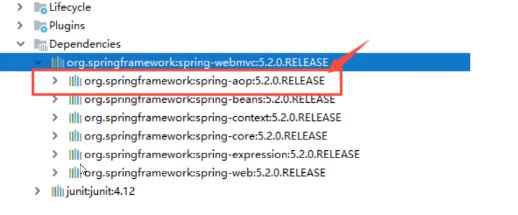
使用注解需要导入context约束,增加注解的支持!
属性如何注入
@Component
public class User {
public String name;
@Value ("彬哥")
public void setName(String name) {
this.name = name;
}
}衍生的注解
@Component 有几个衍生注解,我们在web开发中,会按照mvc三层架构分层!
dao 【@Repository】
service 【@Service】
controller【@Controller】
这四个注解功能都是一样的,都是代表将某个类注册到Spring中,装配Bean
4.自动装配置

5.作用域
@Component
@Scope("prototype")
public class User {
public String name;
@Value ("彬哥") public void setName(String name) {
this.name = name;
}
}6.小结
xml 与注解
xml更加万能,适用于如何场合!维护简单方便!
注解 不是自己类使用不了,维护相对复杂!
xml与注解最佳实践
xml用来管理Bean;
注解只负责完成属性的注入;
我们在使用的过程中,只需要注意一个问题;必须让注解生效,就需要开启注解的支持
<!--指定要扫描的包,这个包下的注解就会生效-->
<context:component-scan base-package="com.bubbles"/>
<context:annotation-config/>以上是关于Spring整合笔记的主要内容,如果未能解决你的问题,请参考以下文章